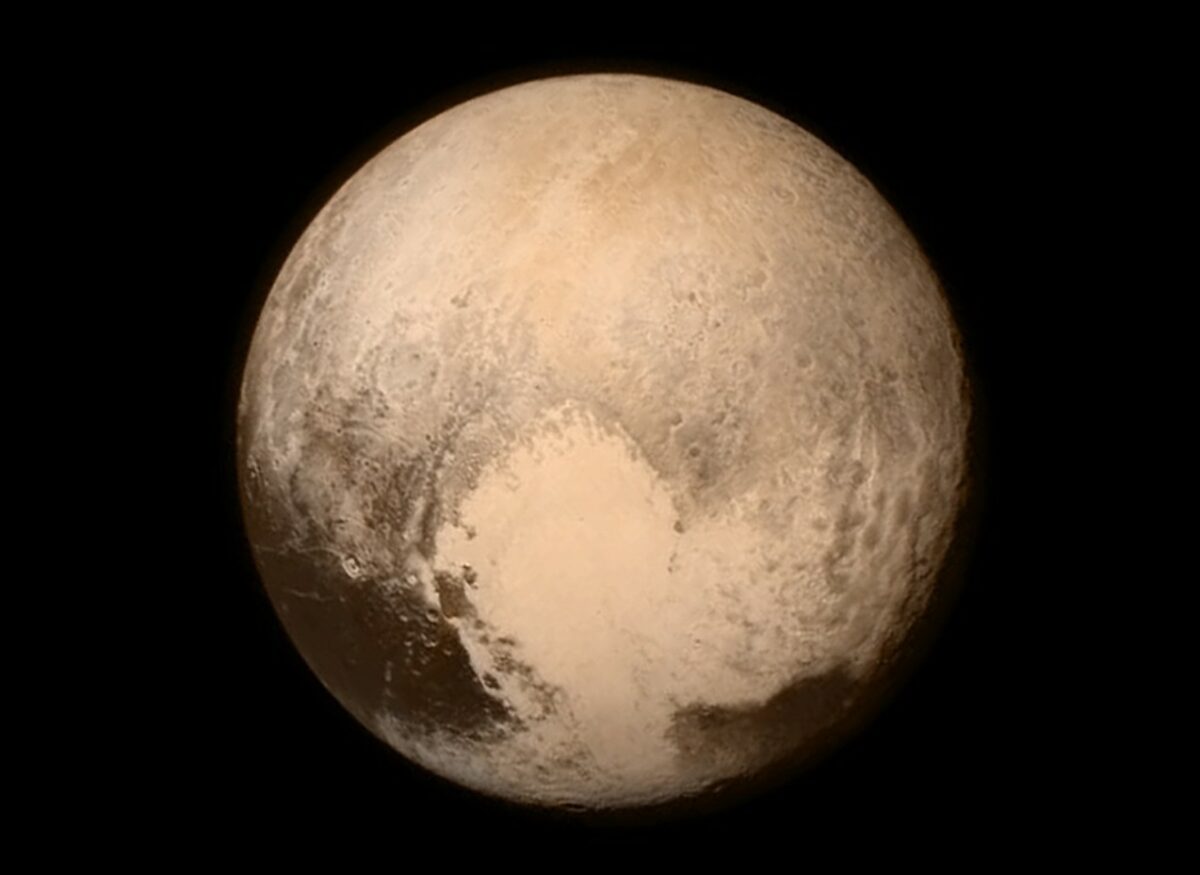Pause Your ‘Justice For Pluto’ Chanting and Get Ready to Party, Pluto Could Become a Planet Again
Hey—it ain't over 'til the woman, whose weight we won't comment on, sings.

In 2006, the International Astronomical Union revised its rules for what makes a planet a planet—which meant that Pluto, the smallest and furthest away of the nine planets in our Solar System, got demoted to the rank of a dwarf planet. It did have an orbit around the Sun, as well as a spherical shape, but it didn’t have an orbit cleared of other objects—so, out of the big kid club it went, leaving behind Mercury, Venus, Earth, Mars, Jupiter, Saturn, Uranus, and Neptune. And ever since 2006, the demotion of Pluto has never stopped being a hot topic of discussion amongst scientists and internet users everywhere.
Because how can it not be a planet? Look at that cute, heart-shaped formation New Horizons revealed in 2015, how can we not have that lil’ guy back? Neil deGrasse Tyson, is it really that impossible?
Sadness from the general public aside, the status of Pluto is a real question that the scientific community is still debating—and as in any debate, there’s an abundance of different opinions backed up by theories and empirical proof that is wildly out of my field of study, but that I will try to summarise nonetheless since I have been nothing but a space enthusiast ever since I sat down my five-year-old self to watch Ron Howard’s Apollo 13 with my dad.
We don’t talk about Pluto. No, no. We don’t talk about Pluto. But …
In December 2021, a team of researchers from the scientific journal Icarus published a study arguing that the IAU’s redefinition of what constitutes a planet—and the decision that followed to demote Pluto from the list—didn’t have the strong scientific base expected in the field of astronomy. The team at Icarus felt that any geological object active in space should be considered a planet instead, following the definition adhered to by Renaissance scientists. That would mean that not only would Pluto regain its planet status, but a whole new array of celestial bodies would follow it—the other dwarf planets, for starters. This means Ceres in the asteroid belt would become a planet, as well as Makemake, Haumea, and Eris, the transneptunian objects (meaning they orbit beyond Neptune, officially the last planet of the Solar System).
It’s a feeling shared by Dr. Alan Stern, a planetary scientist at NASA working on the New Horizons mission that successfully conducted Pluto’s first flyby in 2015. Forbes reports that while speaking at the “I Heart Pluto Festival” in early 2021, he declared that the demotion to “dwarf planet” doesn’t make any scientific sense—for reasons that are similar to those of the Icarus journal researchers. Dr. Stern suggested that a number of new discoveries around the mid-2000s, especially that of Eris in 2015, led the International Astronomical Union to restrict what was considered a planet. But only as a way to limit the number of “official” planets and keep them easy to memorize. And while we appreciate anyone making our 2nd-grade science tests easier, it feels like kind of a weak reason.
The whole thing is a generally unscientific way to go about things, according to Dr. Stern. And furthermore, the method the IAU chose to utilize for Pluto’s demotion was a vote. Good thing there wasn’t a write-in option. Pluto could have both gotten demoted and had its name changed to, “HOMEWORK SUCKS.” At least we dodged that bullet.
“Voting is a terrible mechanism of doing science. We don’t vote on the theory of relativity. We don’t vote on quantum mechanics,” Stern said.
So, does that mean there’s still a possibility for Pluto to be considered a planet again? And with it, potentially a whole array of other celestial objects orbiting around in our Solar System? Maybe. The debate remains open, meanwhile, Pluto continues its centuries-long orbit around the sun, somewhere at the far edge of our galaxy.
(via: NBC News; image: NASA)
Have a tip we should know? [email protected]